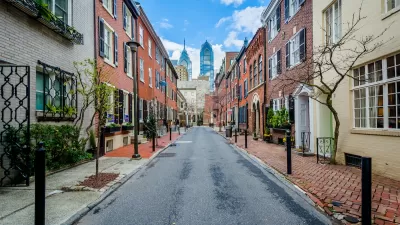Whether or not U.S. housing is affordable comes down not only to cost but also to wages. Both vary dramatically from city to city.
Housing affordability in the United States shows extreme variety. In the Midwest, where many homes are losing value or gaining it slowly, it can be hard to build wealth through home equity, but in the popular cities of the west coast, housing is out of reach for many. "In the median U.S. neighborhood, house prices are approximately three times annual household income," Cecile Murray and Jenny Schuetz write for Brookings. Still there's plenty of variance.
"Almost all Southern and Midwestern households live in affordable neighborhoods, while large shares of Northeastern and Western neighborhoods have price-income ratios that would stretch middle-income family budgets," Murray and Schuetz write.
This gap comes with it's own suite of problems. In some areas where homes have lost value or been flat, home owners see little reason to maintain homes that aren't very valuable. "Neighborhoods with persistently low home price-income ratios raise concerns about the ability of families to build wealth because home equity is the main source of wealth for middle-income families," Murray and Schuetz write. Meanwhile, cities like Los Angeles and San Francisco struggle with homelessness and a lack of affordable housing to buy or rent.
FULL STORY: Housing in the U.S. is too expensive, too cheap, and just right. It depends on where you live.

Planetizen Federal Action Tracker
A weekly monitor of how Trump’s orders and actions are impacting planners and planning in America.

Chicago’s Ghost Rails
Just beneath the surface of the modern city lie the remnants of its expansive early 20th-century streetcar system.

San Antonio and Austin are Fusing Into one Massive Megaregion
The region spanning the two central Texas cities is growing fast, posing challenges for local infrastructure and water supplies.

Since Zion's Shuttles Went Electric “The Smog is Gone”
Visitors to Zion National Park can enjoy the canyon via the nation’s first fully electric park shuttle system.

Trump Distributing DOT Safety Funds at 1/10 Rate of Biden
Funds for Safe Streets and other transportation safety and equity programs are being held up by administrative reviews and conflicts with the Trump administration’s priorities.

German Cities Subsidize Taxis for Women Amid Wave of Violence
Free or low-cost taxi rides can help women navigate cities more safely, but critics say the programs don't address the root causes of violence against women.
Urban Design for Planners 1: Software Tools
This six-course series explores essential urban design concepts using open source software and equips planners with the tools they need to participate fully in the urban design process.
Planning for Universal Design
Learn the tools for implementing Universal Design in planning regulations.
planning NEXT
Appalachian Highlands Housing Partners
Mpact (founded as Rail~Volution)
City of Camden Redevelopment Agency
City of Astoria
City of Portland
City of Laramie





























